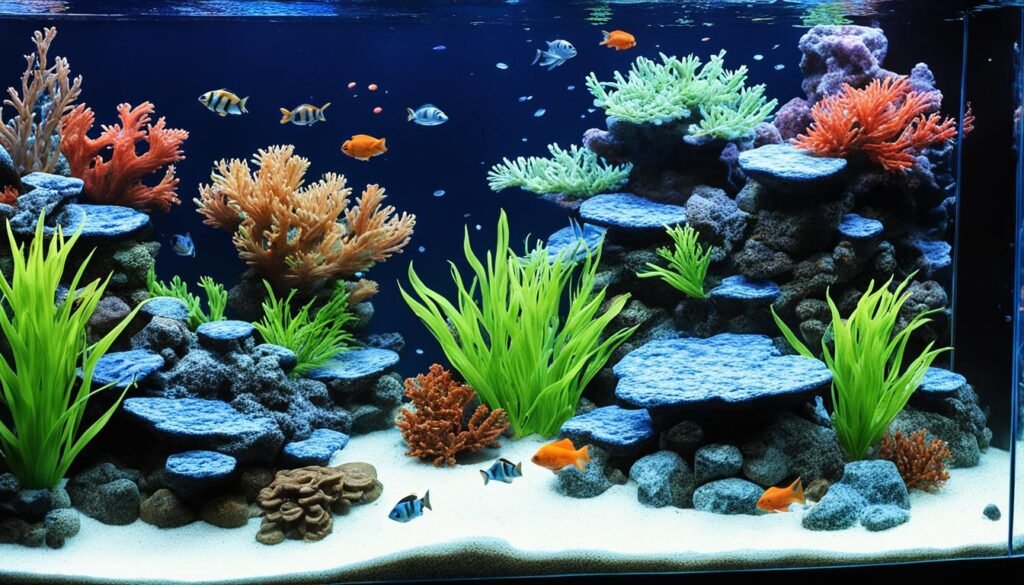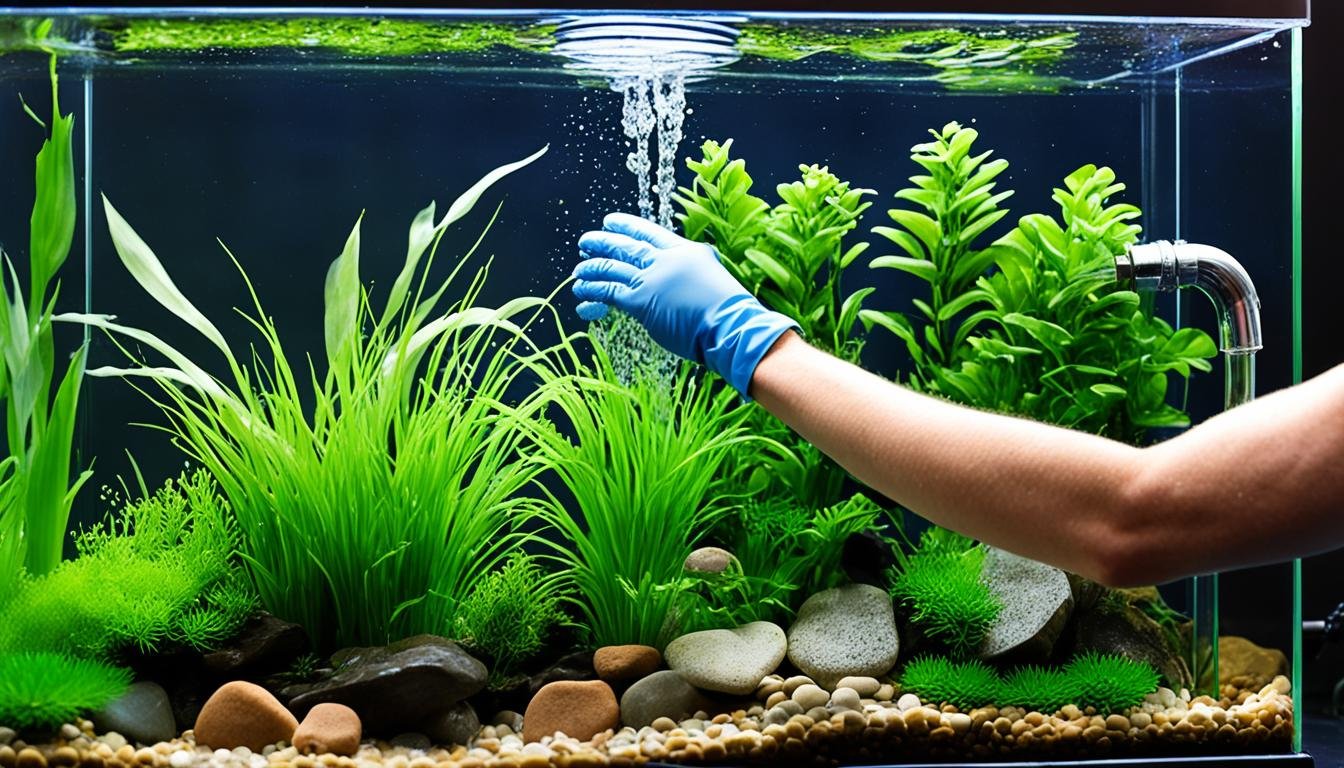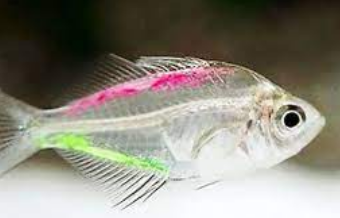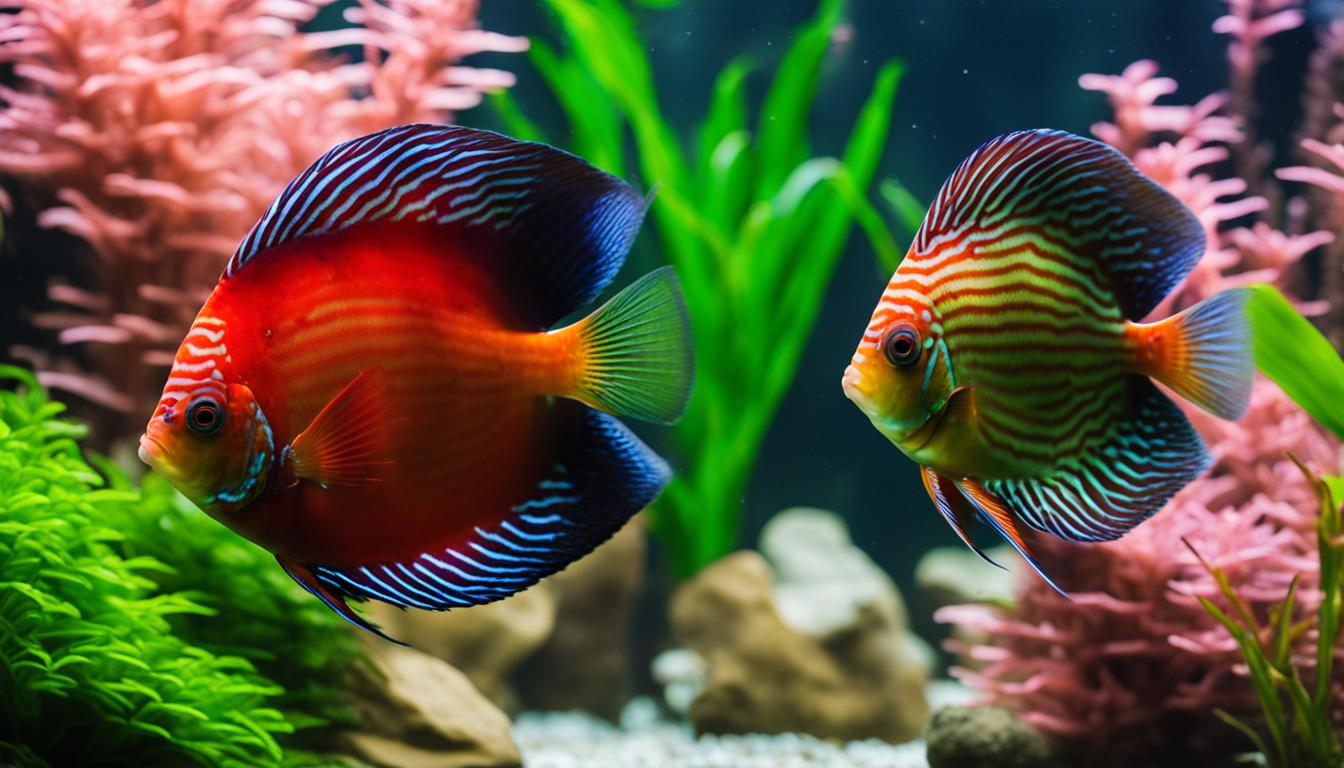Did you know that changing the water in your aquarium regularly is key for a healthy home for your fish? That’s right! By changing the water, you take away harmful nitrates. This keeps your fish happy and healthy.
How often you should change the water depends on how many fish you have and how much you feed them. Testing the water for nitrates tells you when it’s time to change the water.
Table of Contents
Aquarium Water Changes Key Takeaways:
- Aquarium water changes are crucial for maintaining a healthy aquatic environment.
- Regular water changes help remove harmful nitrates and ensure the well-being of your fish.
- The frequency of water changes depends on the bio-load of your tank and can be determined through water testing.
- Performing water changes following best practices is essential to maintain water quality and promote fish health.
- Using appropriate products like water conditioners and beneficial bacteria supplements can enhance the effectiveness of water changes.
Why Are Water Changes Important for Aquariums?
Changing water in your aquarium is very important. It helps keep the water clean, removing harmful substances like nitrates, waste, and chemicals. Clean water is vital because it helps your fish grow well, reduces their stress, and lowers disease risk. Also, when you change the water, you add essential minerals that the water might have lost.
Fish release ammonia as waste, which can turn toxic. Dead plants and uneaten food also create harmful stuff. All these bad things can make your fish sick and stressed.
When you change the water regularly, you reduce these toxins. You should take out some of the tank’s water and put fresh, treated water back in. Usually, changing 10-20% of the water is a good idea. Still, this might change depending on your tank’s needs and what fish you have.
Changing water is not just good for your fish. It also keeps your aquarium stable. Clean water helps good bacteria grow. These bacteria are crucial because they break down ammonia into safer substances. This keeps your tank’s ecosystem healthy and balanced.
So, regular water changes are key for a healthy aquarium. They remove bad substances, support a good environment for fish, and keep your ecosystem healthy. Don’t skip water changes if you want a beautiful aquarium where your fish thrive.
How often should you change the water in your aquarium?
Changing your aquarium water regularly is key to a healthy fish environment. You should look at the bio-load and nitrate levels to decide when to change the water.
For tanks with a moderate number of fish, change 30% of the water every week. This keeps the water fresh and removes waste, which is good for the fish. But if your tank is full or has high nitrate levels, you might need to change the water more often.
The Bio-load and Water Quality
The bio-load is about how many fish you have and how much they eat. More fish and food mean more waste. This can increase nitrate levels. It’s important to test the water often to keep track of the nitrate levels.
If the nitrate levels stay high, you’ll need to change the water more. Replacing the old water with new, clean water helps avoid harmful build-ups. This keeps your fish healthy.
Adapting the Water Change Schedule
Each aquarium is different, so you need to adjust how often you change the water. Watch your fish and test your water to see if changes are needed. This helps you know if you’re changing the water enough.
Think about your tank size, filter, and if you have live plants when planning water changes. Finding the right balance is important. It helps keep the water great without upsetting the tank’s natural setting.
Best Practices for Aquarium Water Changes
To perform a water change effectively, follow these best practices:
- Prepare the water: If you use tap water, let it sit for three days so chlorine can evaporate. Or, use a dechlorinator to make the water safe before adding it to your tank.
- Gather your supplies: Get a siphon or gravel vacuum, clean buckets, a sponge or algae scraper, and water conditioner if needed.
- Clean the tank: Before starting, use a sponge or algae scraper to clean the tank’s inside glass.
- Remove debris: With a siphon or gravel vacuum, take out waste from the substrate. Be careful not to remove too much water.
- Replace water: Add new, treated water slowly. Watch the temperature and water chemistry. Aim to change 10-20% of the tank’s water.
- Test the water: Test for pH, ammonia, nitrite, and nitrate levels after the water change. Ensure they are safe for your fish.
- Monitor your fish: Watch your fish for stress or illness after changing the water. Make adjustments or seek advice if needed.
Tips for a Successful Water Change
Here are some more tips for smooth water changes:
- Plan your water changes ahead to keep a routine.
- Make sure the new water’s temperature matches the tank’s water.
- Be gentle with your fish during water changes to reduce stress.
- Keep track of your water change activities, including any changes in water or fish behavior.
- Clean and maintain your water change equipment regularly for the best results.
By following these practices and tips, you can keep your aquarium clean and your fish happy and healthy.
Freshwater Aquarium Water Changes vs. Saltwater Aquarium Water Changes

When you change water in an aquarium, there are big differences between freshwater and saltwater tanks. Even though the main idea is the same, these differences matter a lot. They help keep your aquarium healthy and stable.
Water Changes in Freshwater Aquariums
For freshwater tanks, you usually need to change about 10-20% of the water regularly. This helps get rid of harmful nitrates and other bad stuff. It keeps the water clean for your fish.
Changing part of the water helps keep everything balanced. It’s good for your fish’s home and their health.
Water Changes in Saltwater Aquariums
Saltwater tanks often need bigger water changes, about 20-25%. This is because saltwater setups are more delicate. Big changes help remove waste and keep things like salinity levels right.
In saltwater tanks, you can’t just use tap water. You need a special saltwater mix. This mix keeps the salt levels just right for your saltwater fish and creatures. Make sure to use a good marine salt mix.
No matter if you have a freshwater or saltwater tank, changing water regularly is key. Knowing what your specific tank needs helps you take the best care of your fish. This way, you can have a healthy and happy underwater world.
Freshwater vs. Saltwater Aquarium Water Changes
| Aspect | Freshwater Aquariums | Saltwater Aquariums |
|---|---|---|
| Water Change Frequency | Around 10-20% regularly | Approximately 20-25% regularly |
| Water Source | Tap water | Saltwater mixture |
| Salinity Levels | Not a concern | Crucial to maintain appropriate salinity levels |
Tips for Maintaining Water Quality in Your Aquarium
To keep your aquarium’s water clean, follow these tips:
- Perform regular water testing: Always test your aquarium’s water for ammonia, nitrite, nitrate, pH, and more. This helps you spot problems and act swiftly.
- Clean the filter regularly: A clean filter is key to good water quality. Clean or change the filter media as needed to keep it working well.
- Avoid overfeeding: Feeding too much makes the water dirty and raises ammonia and nitrate levels. Give your fish just enough food to eat in a few minutes.
- Maintain proper stocking levels: Too many fish can overwork the filter and harm the water quality. Make sure your fish have enough room by knowing their needs.
- Use live plants: Live plants use nitrates and give oxygen to the water. They also make the aquarium look more natural and beautiful.
- Regularly clean the substrate: Use a vacuum to clean the gravel or substrate when you change the water. This stops harmful substances from building up.
- Monitor water temperature: Keep the temperature right for your fish. Changes in temperature can stress them and hurt the water quality.
| Tips for Maintaining Water Quality in Your Aquarium | Description |
|---|---|
| Perform regular water testing | Check the water for ammonia, nitrite, nitrate, pH, and other important levels regularly. It allows you to identify and address problems promptly. |
| Clean the filter regularly | Your filter must be clean to keep the water fresh. Clean or swap the filter media as advised to ensure it filters effectively. |
| Avoid overfeeding | Too much food pollutes the water and increases toxic ammonia and nitrate. Feed your fish an amount they can finish quickly. |
| Maintain proper stocking levels | Having too many fish strains the filtration system and degrades water quality. Research and provide ample space for the fish you keep. |
| Use live plants | Live plants reduce nitrates and oxygenate the water. They enhance the tank’s natural beauty too. |
| Regularly clean the substrate | Clear out waste from the substrate with a vacuum during water changes. It prevents harmful buildups. |
| Monitor water temperature | Ensure the water’s temperature is suitable for your fish. Temperature shifts can stress them and spoil the water. |
The Role of Water Conditioners in Aquarium Water Changes
Water conditioners are a must for keeping a healthy aquarium. They help in water changes by getting rid of bad chemicals. These include chlorine, chloramines, and heavy metals in tap water.
Tap water is made safe for us to drink with these chemicals. But, they can be deadly to fish and aquatic life. They upset the balance of the aquarium and can harm the fish.
A high-quality water conditioner, like API® STRESS COAT™, is crucial. It makes sure tap water becomes safe for fish by neutralizing these chemicals. This protection is key during water changes.
Some water conditioners also add beneficial elements that help fish stay healthy. For instance, API® STRESS COAT™ has Aloe Vera. It soothes and heals fish, reducing the risk of stress-related sickness.
Water conditioners are simple to use. Just follow what the label says to figure out how much you need for your tank. Picking a trusted brand meant for aquariums guarantees the best outcome.
Using a water conditioner in your regular tank care and when you change the water makes a safe home for your fish.
Benefits of Water Conditioners in Aquariums:
- Neutralize harmful chemicals like chlorine and chloramines
- Remove heavy metals from tap water
- Promote fish health and reduce stress
- Ensure water is safe and suitable for fish
- Easy to use
How Beneficial Bacteria Affect Water Changes

Beneficial bacteria are key players in your fish tank. They help change dangerous ammonia into safer substances like nitrite and nitrate. These bacteria, also called nitrifying bacteria, keep the water clean and safe for fish. We’ll discuss how vital these bacteria are in changing tank water and why we must keep them safe.
The Nitrogen Cycle and Beneficial Bacteria
Fish create ammonia, which is toxic. Beneficial bacteria turn this ammonia into nitrite, a process known as nitrification. Then, another kind of beneficial bacteria change nitrite into the less toxic nitrate.
This nitrogen cycle is crucial for your fish’s health. Beneficial bacteria act like natural filters, cleaning the water of toxins. By keeping these bacteria healthy, you ensure your fish live in a balanced, safe environment.
Preserving Beneficial Bacteria During Water Changes
It’s key to keep beneficial bacteria safe during water changes. Not doing so can upset the tank’s balance and lead to harmful ammonia levels. Here’s how to protect these important bacteria:
- Try not to clean or swap out the filter media unless you must. This media is where lots of beneficial bacteria live. Instead of using tap water, gently rinse it in old tank water. This helps avoid losing too many bacteria.
- Be careful when cleaning the tank’s bottom or gravel. Aim to remove waste without disturbing the bacteria that live there. Removing too much water can also harm these bacteria.
- Using products like API® QUICK START™ is a great idea during water changes or setting up new tanks. These products add beneficial bacteria to your tank, aiding the nitrogen cycle.
With these tips, you can change your tank’s water without losing the vital bacteria that keep it healthy.
Summary
Beneficial bacteria are crucial for turning harmful ammonia into safer substances in your aquarium. Keeping these bacteria safe during water changes is vital for a healthy tank. Understanding their importance and how to protect them ensures your fish stay in optimal conditions.
The Importance of pH in Aquarium Water Changes
pH levels are vital for fish health in aquariums. Each fish species needs a specific pH to do well. If the pH changes suddenly, it can stress or kill the fish.
It’s important to check and keep the right pH when changing aquarium water. This keeps the environment stable and healthy for your fish.
Using API® PROPER pH™ products can help control your aquarium’s pH. These products make it easy to keep the pH just right for your fish. They help reduce stress and keep your fish healthy.
Why is pH important?
pH impacts fish’s breathing, digestion, and health. It also affects how well medications work and the growth of good bacteria. Keeping the pH right is key for healthy fish.
Monitoring pH levels
To find out the pH in your aquarium, use a pH test kit. This lets you watch for any changes. Regularly testing and maintaining pH is crucial for your fish’s health.
Remember, each fish species likes a different pH level. Knowing your fish’s needs helps you maintain the ideal pH for them.
Adjusting pH levels
If the pH isn’t right for your fish, API® PROPER pH™ can help. These products safely adjust the pH. They bring it to the level your fish needs.
When changing pH, always follow the product directions. Change the pH slowly to avoid stressing your fish. Be careful with any pH adjustments.
Keeping the right pH is just one part of a healthy aquarium. You also need regular water changes, good filtration, and to check other water qualities. All these are vital for your fish’s welfare.
Watch the pH levels and use the right tools. This way, you can make a good home for your fish. It will keep them healthy and happy.
The Benefits of Using Aquarium Salt in Water Changes
Aquarium salt comes from evaporated sea water. It has many benefits in water changes. It can improve your fish’s health and well-being.
Promotes Healthy Gill Function and Fish Respiration
Adding aquarium salt to water changes helps fish breathe better. It improves gill function and electrolyte balance. This is especially helpful during stress or when fish need more oxygen.
Enhances Fish Coloration and Overall Health
Aquarium salt can make fish colors brighter and improve their health. It provides essential minerals and electrolytes. These help fish stay healthy and fight off diseases.
Reduces the Harmful Effects of Nitrite
Aquarium salt can lessen nitrite’s bad effects in water changes. Nitrite is toxic to fish at high levels. Salt gives an extra layer of protection.
Aids in the Recovery from Certain Fish Diseases
Using aquarium salt can help fish recover from diseases. It works well against parasites and bacterial infections. Salt reduces stress and promotes healing.
It’s important to use aquarium salt properly. Be sure to use salt made for freshwater aquariums. Always follow the dosage instructions. Know the salt needs of your fish species.
Conclusion
Changing the water in your aquarium often is key to a healthy water home. Knowing why water changes are important helps keep your fish happy. Using products like water conditioners and beneficial bacteria helps too.
Keeping an eye on water quality, what you feed your fish, and cleaning the tank is important. If you’re not sure what’s best for your fish, ask a pro or read up from reliable sources. They can tell you what your type of fish needs.
To wrap it up, regular water changes and good tank care make a perfect home for your fish. The health and joy of your fish depend on their environment. So, taking good care of their home means they’ll live long and happy lives.
FAQ
Why are water changes important for aquariums?
Water changes keep aquarium water clean by removing nitrates and waste. This makes the water safe for fish, reducing stress and disease risk.
How often should you change the water in your aquarium?
Water change frequency depends on tank size and fish number. A 30% change each week is good for most tanks. But tanks with more fish may need changes more often.
What are the best practices for aquarium water changes?
To change aquarium water, prepare fresh water and gather needed supplies. Clean the tank and remove debris before adding new water. Check the water quality and watch your fish for any signs of stress.
What are the differences between freshwater and saltwater aquarium water changes?
Freshwater tanks need 10-20% of the water changed regularly. Saltwater tanks usually require 20-25% changes, and special saltwater mix to maintain the right salinity.
What are some tips for maintaining water quality in an aquarium?
To keep water quality high, test the water often and clean the filter. Don’t overfeed your fish. Keep the right number of fish and use plants. Clean the ground and monitor the water’s temperature.
What is the role of water conditioners in aquarium water changes?
Water conditioners make tap water safe for fish by removing chlorine and metals. This helps keep fish healthy and lowers their stress.
How do beneficial bacteria affect water changes?
Beneficial bacteria in your tank turn ammonia into safer chemicals. Keeping these bacteria healthy is key to a balanced tank. They help your fish by keeping the water clean.
What is the importance of pH in aquarium water changes?
pH shows if water is acidic or alkaline. Fish need the pH level to stay the same because sudden changes can harm them. Checking and maintaining the right pH level is vital.
What are the benefits of using aquarium salt in water changes?
Using aquarium salt helps fish breathe better and look brighter. It also fights off diseases and lessens nitrite’s bad effects. Remember, use salt made for aquariums and follow the instructions.
References
- International Federation of Online Clubs and Aquatic Societies (IFOCAS)
- Federation of British Aquatic Societies (FBAS)
- Northeast Council of Aquarium Societies (NEC)
- Federation of American Aquarium Societies (FAAS)
- Ornamental Aquatic Trade Association (OATA)
I am a passionate aquarist with over 30 years of hands-on experience in fishkeeping. My journey began at a young age, collecting fish from the wild and learning through experimentation. Specializing in tropical fish, I bring a deep understanding of the hobby to FishKeepingMadeSimple. The site provides honest, detailed reviews of essential products and accessories to help fellow enthusiasts create the best environments for their fish.










[…] mimics their natural habitat, complete with adequate hiding spots and ample swimming space. Regular water changes and pristine water conditions are vital to prevent ailments and promote […]
[…] water changes and proper filtration are essential for maintaining optimal water quality and ensuring the health of swordtail […]
[…] gallon measurements: Marking the tub makes changing water and adding medicine easier. This helps keep the water right and makes sure you use the correct […]
[…] The Water Sprite can be used in various ways to enhance the aesthetics of the aquarium. It can be used as a […]
[…] health and breeding. Changes in pH can stress and even kill them. To keep it stable, I do regular water changes, use good filtration, and sometimes add […]